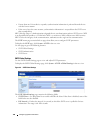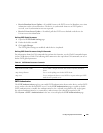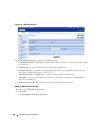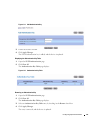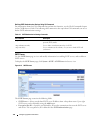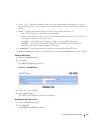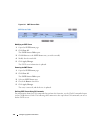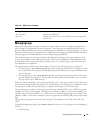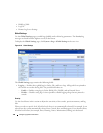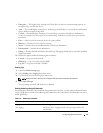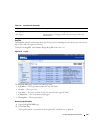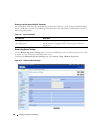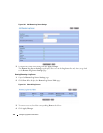
Configuring System Information 135
Managing Logs
The switch may generate messages in response to events, faults, or errors occurring on the platform as
well as changes in configuration or other occurrences. These messages are stored both locally on the
platform and forwarded to one or more centralized points of collection for monitoring purposes as well as
long term archival storage. Local and remote configuration of the logging capability includes filtering of
messages logged or forwarded based on severity and generating component.
The
in-memory
log stores messages in memory based upon the settings for message component and
severity. On stackable systems, this log exists only on the top of stack platform. Other platforms in the
stack forward their messages to the top of stack log. Access to in-memory logs on other than the top of
stack platform is not supported.
The
persistent
log is stored in persistent storage. Two types of persistent logs may be configured.
• The first log type is the
system startup log
. The system startup log stores the first N messages received
after system reboot. This log always has the log full operation attribute set to stop on full and can store
up to 32 messages.
•The second log type is the
system operation log
. The system operation log stores the last N messages
received during system operation. This log always has the log full operation attribute set to overwrite.
This log can store up to 1000 messages.
Either the system startup log or the system operation log stores a message received by the log subsystem
that meets the storage criteria, but not both. On system startup, if the startup log is configured, it stores
messages up to its limit. The operation log, if configured, then begins to store the messages.
The system keeps up to three versions of the persistent logs, named <FILE>0.txt, <FILE>1.txt, and
<FILE>2.txt. Upon system startup, <FILE>2.txt is removed, <FILE>1.txt is renamed <FILE>2.txt,
<FILE>0.txt is renamed <FILE>1.txt, <FILE>0.txt is created and logging begins into <FILE>0.txt.
(Replace <FILE> in the above example to specify olog for the operation log and slog for the startup
log.)
The local persistent logs can be retrieved by using the CLI, xmodem over the local serial cable, and
TFTP.
To display the Logs menu page, click System
→
Logs in the tree view. Use this page access the following
features:
• Global Settings
Table 6-10. SNTP Servers Commands
CLI Command Description
show sntp configuration Displays the SNTP configuration.
show sntp status Displays the SNTP status.
sntp server Configures the SNTP server to use SNTP to request and accept NTP
traffic from it.




